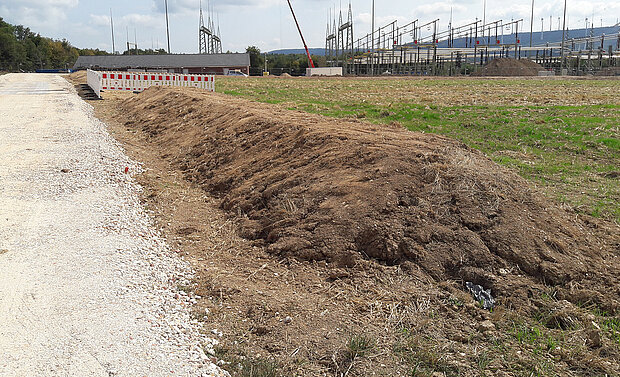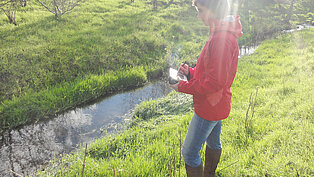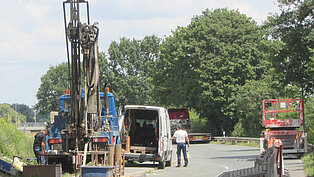
Pedological Construction Supervision
DIN 19639 stipulates preparing a soil protection concept and conducting pedological construction supervision if the soils in the area of intervention must fulfill their natural function again once construction has been completed. This pertains especially to soils with a high level of functional performance, to particularly sensitive soils, or to intervention areas of more than 5,000 m². Soil protection that is approval-compliant and feasible begins with basic evaluation, usually involves a technical contribution to the permit approval planning process (soil protection concept), and extends to pedological construction supervision during implementation and the aftercare phase where applicable.
- Soil mapping in accordance with the Manual of Soil Mapping, 5th edition (Bodenkundlicher Kartieranleitung, KA5), including soil probing using a Puerckhauer soil sampler
- Evaluation of soil science data and assessment of soil function and the worthiness of protection according to technical parameters, e.g. LANUV Handout 42
- Assessment of the need for protection on the basis of a comparison of soil sensitivities and construction-related potential impacts (risk assessment)
- Verification of the protection capability and recommendation of measures for prevention and reduction of the potential impacts – preparation of an exemplary soil protection concept, incl. soil conservation plan as per DIN 19639
- Assistance with awarding contracts / specifying construction work
- Pedological construction supervision (as per DIN 19639) in the implementation and reclamation phases
We provide these services in interdisciplinary collaboration with other technical experts from the environmental field or as a contribution to environmental site supervision or ecological construction supervision.
In close technical coordination between construction-phase soil protection and other nature conservation considerations, we provide support as needed for water protection tasks, the provisions under water law, and the facts at hand. This is effective in many cases, such as the dewatering/drainage of sites with construction or operational activities (§ 56 WHG) or the erection of crossing structures or tunnel passages built at or near waterbodies (§ 36 WHG).




